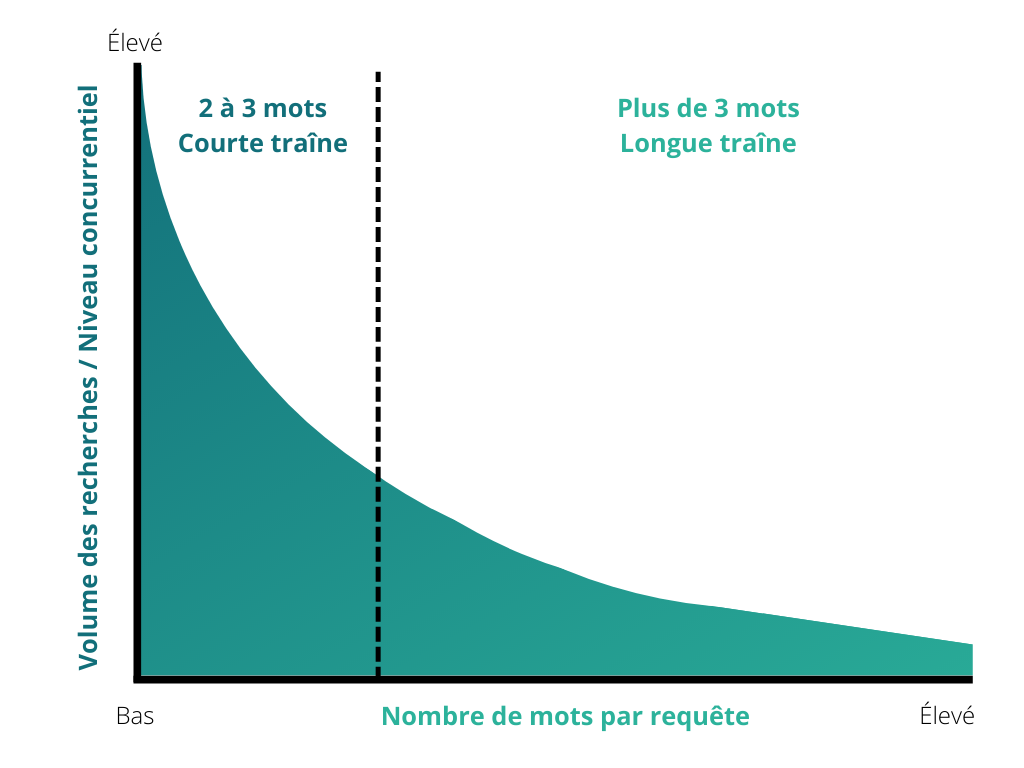Natural
strategy
or SEO (Search Engine Optimization) strategy revolves in part around the use of keywords.
Keywords correspond to queries typed by Internet users to access the information they’re looking for. In order for them to find your website, it must contain a text content which will provide the user with an answer. It is therefore important to build a keyword strategy to generate maximum traffic. These words are linked to their semantic field and all the themes to which they relate. That’s why it’s not enough to repeat a single term over and over again if you want to position yourself in the top ten. best Google results.
According to
Olivier Andrieu
France’s best-known SEO expert, keywords can be defined according to their interest (often searched for by users) and their feasibility (possibility of being positioned in the first results as quickly as possible).

Find the right keywords for your SEO in 3 easy steps
As with any business strategy, keyword research is not a trivial matter, and must be the fruit of meticulous work. Be visible on search engines can pay off! A
site audit
may be necessary to identify areas for improvement.
To help you better understand the various principles and subtleties of SEO, we’ll use a concrete, completely fictitious example.
Let’s imagine you’re Fabien, manager of a small car dealership in Marly in the Valenciennes region. How can you make yourself known outside of word-of-mouth and reach potential new customers on the web?
1. Define your business and its sector
Although this step may seem “simple”, as everyone feels they have enough knowledge in their own field of activity, define your scope is actually more complex. You need to know your target profiles and their expectations (after-sales service, spare parts, new, used vehicles…) based on your your products and services. You won’t be using the same keywords if you’re marketing commercial vehicles for professionals, or city cars for private customers.
To properly define your business, you need to analyze it as a “funnel”.funnel“From the most general to the most precise. If you sell vehicles to private individuals, what is your positioning ? New or used, cheap or luxury, versatile or sporty. To do this, start by defining your personas, describe the products and services on offer, analyze market trends and the sector as a whole, analyze the competition, and so on.
Analyze your competitors
Your competitors are probably the ones who can help you find the best best keyword ideas ! Examining the structure of their websites offers a wealth of information on how they manage to rank in the search results. You can also make a competitive advantage What do you do that they don’t? (Is Fabien a relentless German car expert?). Thanks to the evolution of analysis tools, you can now list the words and expressions on which your competitors are positioned, so why deprive yourself?
Ask family and friends for help!
Yes, we’re dead serious! Receive external advice and recommendations is essential, because these keyword suggestions are often very relevant, and you may not have thought of them. These third parties bring a fresh perspective, often from the point of view of a potential consumer.
2. Create keyword lists
Create raw lists of hundreds of words
Listing keywords isn’t just about scribbling a few ideas on a piece of paper (although you have to start somewhere!). The aim here is to complete the first raw list with queries close to the targeted keywords. Don’t panic: a wide range of software is available to help you create complete lists in just a few clicks.
Our recommendation
:
Keyword Planner
(generates keywords according to your objectives),
Google Trend
(allows you to track current trends) and
Ubersuggest
are great free tools. You can also use Semrush, Answer the Public etc.
Long tail and short tail
The chosen keyword will be qualified as “short tail”.short tail“(or top keyword) if it is less than 3 words long, and “long tail“If it consists of 3 words or more. They take their name from a graph (below) illustrating the number of searches as a function of query length. Long-tail keywords run along the right-hand side of the graph, hence their name. It shows that long-tail keywords are more important than specificwith a lower search volume but a conversion rate.
It’s easy to imagine how difficult it will be torank“(to rank in the first results) with a generic generic term as a “new car”. A key phrase such as “marly car dealership”, is more precise and more likely to lead the user to your site. What’s more, with this type of request, the high conversion rate the person is actively looking for an automotive professional in your area, and will probably end up contacting you.

Gather keywords by theme
At this stage, you should have a list of hundreds or even thousands of keywords. But crude as it is, there’s not much point. Now you’ll need to segment this list into several broad themes to make the next steps a little more effective.
Sort and refine your SEO keyword list
Above all, you need to maintain commercial consistency, remove keywords that are far removed from your offer and give your whole package greater coherence! Then it’s time for the analysis! We’ll make a trade-off between search volume, competition and relevance. Avoid keywords that are too competitive, otherwise our efforts won’t be rewarded. By avoiding a race lost in advance, you can challenge new keywords to find the best SEO opportunities.
Spelling mistakes
Surprising as it may seem, building a keyword list with spelling or typing errors is a good way to consider your SEO strategy. After all, to err is human, and many Internet users are likely to make a mistake when typing their search on Google.
How do you insert these words? You can deliberately choose to write a few lines riddled with mistakes, even if this is rather inadvisable. Let’s be credible. The best way is to subtly integrate them into the text (“We own a fleet of more than 50 used Volkswagens in Valenciennes (not Wolkswagen or Wolksvagen!)”) or to create a dedicated blog post, where you can pile on all the spelling mistakes imaginable (“How to find us? Don’t make the mistake again!”).
3. Build an SEO strategy
Meeting a real need
Once you have your keywords, you can embark on the long and perilous adventure of SEO. It’s important to facilitate the customer journey so they can find the information they’re looking for quickly. To achieve this, we need to build a coherent structure, and this final list will enable us to meet other expectations too: creation of a tree structure that meets the company’s commercial objectives, creation of content pages dedicated to validated expressions, creation of thematic silos, and so on.
Writing a blog
Keeping a blog by regularly writing articles is an excellent way to keep your active websiteand generating traffic to keywords related to your business. A highly effective strategy for natural referencing efficient and durable !
Generally, blog posts take the form of a question or issueto which you respond as a specialist in the field. For example, you could create a “Used cars” category and add articles about your expertise and your vehicles: “Which used car for 20,000 euros?”, “Which used car should I choose?”.
Our recommendation
AnswerThePublic is a free tool that allows you to generate frequently asked questions based on keywords, which is sure to give you ideas for your blog!

Looking for expert help expert to develop your visibility on the web ? Panda Communication will work with you to develop your digital strategy and search engine optimization. We know all about keywords!


